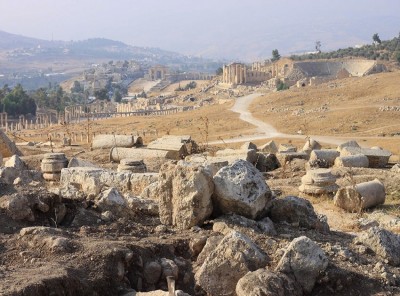City and wadi: exploring the environs of Jerash
Abstract

Archaeological excavations of urban sites in the Mediterranean have a long history, but only recently are geoarchaeology-based landscape studies beginning to provide insight into the complex and dynamic relationships between cities and their hinterlands. Such studies are becoming increasingly important as archaeologists seek to understand how cities sustained themselves, demonstrating resilience to both external shocks and long-term environmental changes, and, conversely, how cities contributed to their own demise through the over-exploitation of environmental resources (Barthel & Isendahl 2013; Butzer et al. 2013; Kintigh et al. 2014; Nelson et al. 2016).
Authors
- Genevieve Holdridge
Department of Geoscience, Aarhus University, Høegh-Guldbergs Gade 2, Building 1671, 8000 Aarhus C; School of Culture and Society—Centre for Urban Network Evolutions (UrbNet), Aarhus University, Moesgård Allé 20, Building 1671, 2138270 Højbjerg, Denmark - Søren M. Kristiansen
Department of Geoscience, Aarhus University, Høegh-Guldbergs Gade 2, Building 1671, 8000 Aarhus C, Denmark - Achim Lichtenberger
Westfälische Wilhelms-Universität Münster, Institut für Klassische Archäologie und Christliche, Archäologie/Archäologisches Museum, Domplatz 20–22, D-48143 Münster, Germany - Rubina Raja
Department of Geoscience, Aarhus University, Høegh-Guldbergs Gade 2, Building 1671, 8000 Aarhus C, Denmark; School of Culture and Society—Classical Archaeology, Aarhus University, Jens Christian Skous Vej 5, Building 1461, 8000 Aarhus C, Denmark - Ian A. Simpson
Centre for Environment, Heritage and Policy, Biological and Environmental Sciences, Cottrell Building, University of Stirling, Stirling FK9 4LA, Scotland, UK

 Cite this article
Cite this article